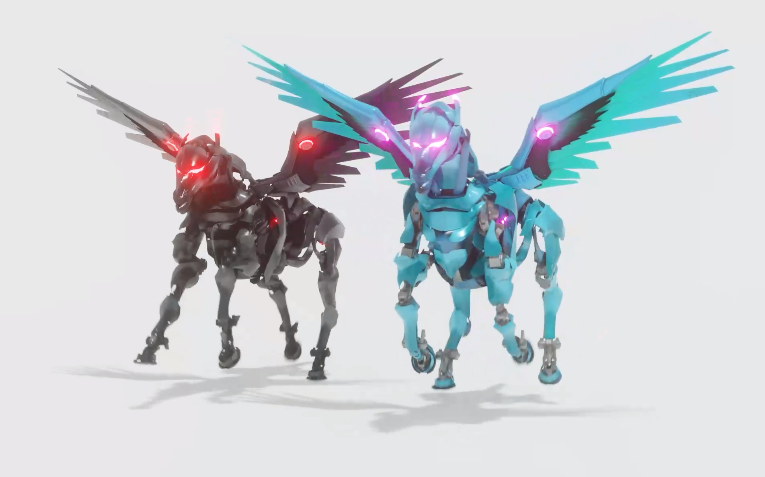Blockchain gaming: The secret to creating communities that lasts isn’t more money, more technology, or more free stuff – it’s human connection.
It’s often said that the crypto space moves at lightning speed. It’s true – new projects, people, and platforms come and go all the time. In this culture of “move fast and break things,” building something that lasts can feel like the exception to the rule.
SponsoredBlockchain Gaming Explosion
The explosion of blockchain gaming is a strong example of this. Huge amounts of money, new users, and brain power are flooding into the play-to-earn (P2E) space in a FOMO-fuelled frenzy of new games and tokens. The energy is palpable in the metaverse and beyond – players and investors alike are eager to get in on new projects before they blow up big. In short, the hype has given builders in the space a unique opportunity for growth. So here’s the question: how can we harness this hype to create something with sustained growth?
After all, we’ve seen this happen before – ICOs, meme coins, and many other once-hot trends have gone the way of the dinosaur. So how can blockchain gaming creators leverage this unprecedented opportunity to create passionate, engaged communities that will outlive the hype?
The task can feel daunting, enigmatic – almost mystical. But in reality, building a lasting blockchain gaming community is a process like any other: it takes time, dedication, and – like all great games – strategy.
Rule #1: Build a Game that People Want to Play.
It’s no secret that the traditional gaming community has been at odds with the blockchain gaming space. Those traditional gamers want to play-to-play, or play-to-win, not play-to-earn. They don’t want their games to feel like jobs.
And they certainly don’t have to – there’s nothing inherent in the nature of blockchain gaming dictating that it has to be laborious, or that the “E” takes precedence over the “P” in P2E. That being said, as builders in the space, I’d like to suggest that it is our responsibility to build games that are, well, fun.
You don’t have to have the best graphics or be a AAA studio. However, you do need to create a game that consistently rewards people for their time and participation – not just with tokens, but with enjoyment. In return, players will continue to reward you with their time and attention. For instance, games with easy mechanics and an abundance of rewards don’t nurture long-term player commitment, though they may bring a bumper crop of short-term participation. For similar reasons, projects shouldn’t rely on giveaways to onboard new users. Free stuff is nice, but it doesn’t encourage long-term loyalty and growth.
Sponsored SponsoredRule #2: Keep it Real.
In this fast-paced space, where watching the numbers go up can feel like the top priority, it can be easy to focus on the quantity of community growth rather than the quality. But in order to develop a strong and loyal user base, real human connection is crucial.
Invest in your community. Instead of relying on volunteers to handle questions and technical issues from new users, hire a team of user support professionals who are there to help 24/7, so that users always have a real person to turn to when they need support. For instance, Pegaxy has a team of support professionals that can give users prompt answers to their questions. This is a critical investment in your community – it will set you apart from the vast majority of games, and your community will appreciate you accordingly.

Rule #3: Slow and Steady Wins the Race.
Consider limiting the growth of your user base until you’re sure that your system can scale accordingly from top to bottom. For example, Pegaxy introduced cool-down mechanisms within its breeding and racing platform, ensuring that NFTs don’t flood the market in just a few weeks.
It’s tempting to open the floodgates and let the good times roll. However, keeping growth at a relatively slower pace will help make sure that users are having a smooth experience. It can also prevent more serious problems from popping up later down the road.
Rule #4: Learn from Others’ Experiences.
Blockchain gaming is so new that it can feel like there are few points of reference for builders. It often seems that we are alone on the edge of our separate universes, navigating completely uncharted territory for the first time.
But even though blockchain gaming is relatively new, the community is growing in experience. Use it. Lots of projects have spent hundreds of thousands – or even millions – of dollars to gain the wisdom of hindsight. Take it as a gift!
Sponsored Sponsored
Rule #5: If It Doesn’t Exist, Build It Yourself.
There’s a saying that goes something like this: “If you’ve found an open task, it might belong to you.” In other words, if you can’t find what it is you’re looking for, build it yourself.
Because blockchain gaming is so new, resources for new creators are often limited. The lack of tools can, at times, feel daunting. But the wide blue ocean that we’ve found ourselves in is an open canvas for creativity, and the things that we create won’t just benefit ourselves – they have the power to impact everyone.
After all, building blockchain gaming communities that lasts isn’t only about the user base that exists within any individual games. It’s also about the community that we’re collectively contributing to as creators. So let’s make it happen.

